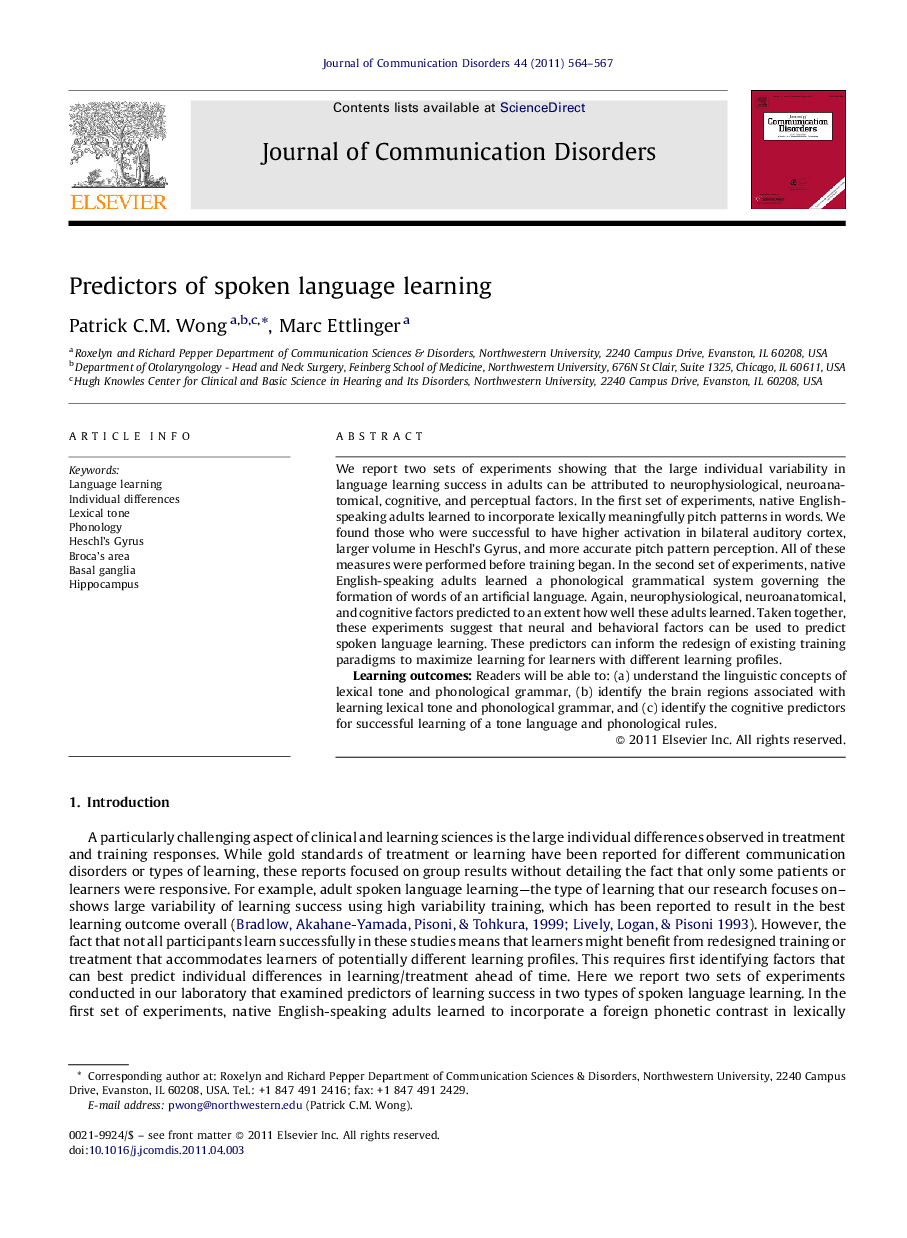| Article ID | Journal | Published Year | Pages | File Type |
|---|---|---|---|---|
| 910892 | Journal of Communication Disorders | 2011 | 4 Pages |
We report two sets of experiments showing that the large individual variability in language learning success in adults can be attributed to neurophysiological, neuroanatomical, cognitive, and perceptual factors. In the first set of experiments, native English-speaking adults learned to incorporate lexically meaningfully pitch patterns in words. We found those who were successful to have higher activation in bilateral auditory cortex, larger volume in Heschl's Gyrus, and more accurate pitch pattern perception. All of these measures were performed before training began. In the second set of experiments, native English-speaking adults learned a phonological grammatical system governing the formation of words of an artificial language. Again, neurophysiological, neuroanatomical, and cognitive factors predicted to an extent how well these adults learned. Taken together, these experiments suggest that neural and behavioral factors can be used to predict spoken language learning. These predictors can inform the redesign of existing training paradigms to maximize learning for learners with different learning profiles.Learning outcomes: Readers will be able to: (a) understand the linguistic concepts of lexical tone and phonological grammar, (b) identify the brain regions associated with learning lexical tone and phonological grammar, and (c) identify the cognitive predictors for successful learning of a tone language and phonological rules.
► We present the findings of two experiments investigating correlates of individual variability in language learning success. ► We consider potential behavioral, neurophysiological and neuroanatomical predictors of learning. ► Success in lexical tone learning correlates with greater activation in the auditory cortex, larger Heschl's gyrus volume and better pitch perception. ► Success in simple phonological grammar learning correlates with greater activation in Broca's area and the basal ganglia, larger Broca's area volume, and better procedural learning ability. ► Success in complex phonological grammar learning correlates with greater activation of the hippocampus, greater hippocampal volume, and better declarative memory.
